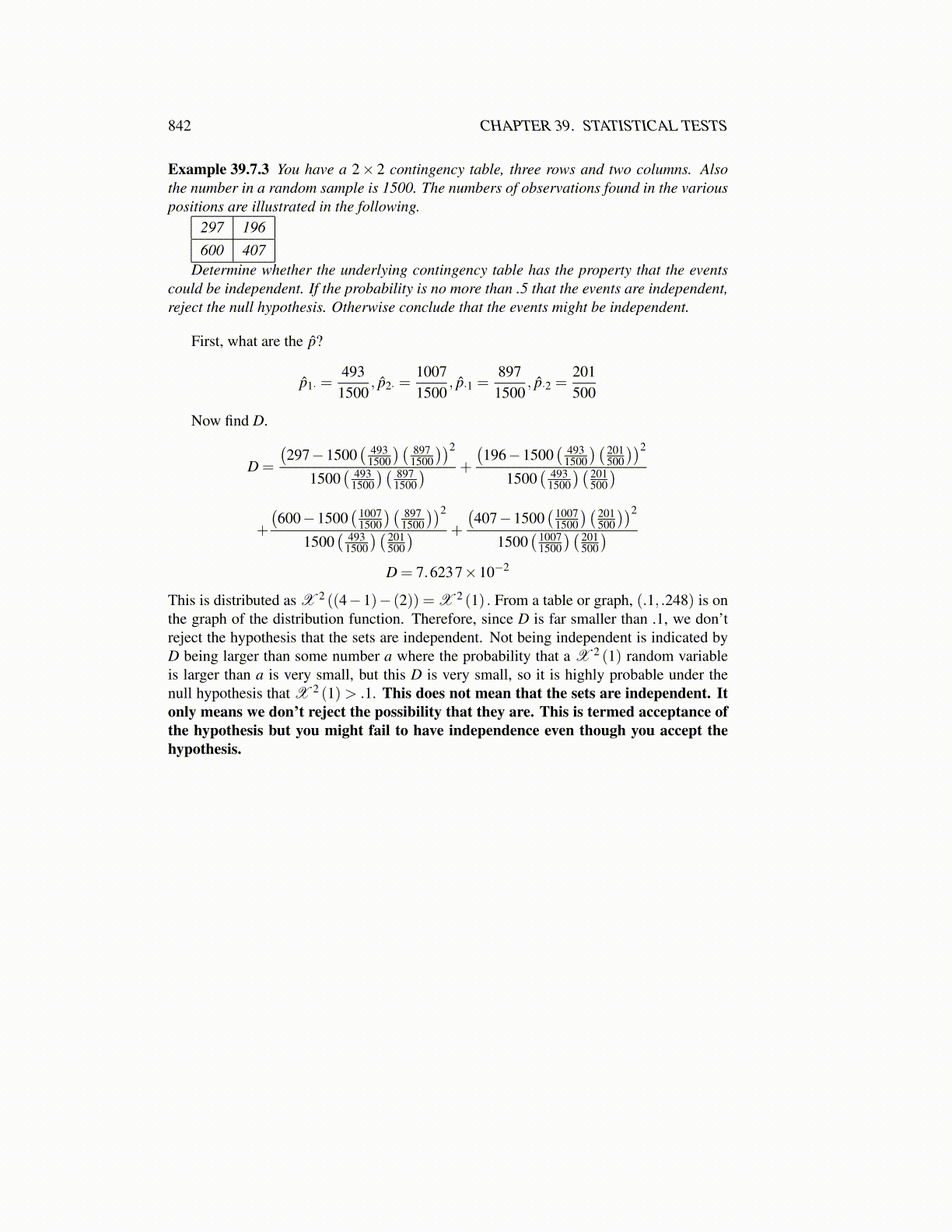
842 CHAPTER 39. STATISTICAL TESTS
Example 39.7.3 You have a 2× 2 contingency table, three rows and two columns. Alsothe number in a random sample is 1500. The numbers of observations found in the variouspositions are illustrated in the following.
297 196600 407
Determine whether the underlying contingency table has the property that the eventscould be independent. If the probability is no more than .5 that the events are independent,reject the null hypothesis. Otherwise conclude that the events might be independent.
First, what are the p̂?
p̂1· =493
1500, p̂2· =
10071500
, p̂·1 =897
1500, p̂·2 =
201500
Now find D.
D =
(297−1500
( 4931500
)( 8971500
))2
1500( 493
1500
)( 8971500
) +
(196−1500
( 4931500
)( 201500
))2
1500( 493
1500
)( 201500
)+
(600−1500
( 10071500
)( 8971500
))2
1500( 493
1500
)( 201500
) +
(407−1500
( 10071500
)( 201500
))2
1500( 1007
1500
)( 201500
)D = 7.6237×10−2
This is distributed as X 2 ((4−1)− (2)) = X 2 (1) . From a table or graph, (.1, .248) is onthe graph of the distribution function. Therefore, since D is far smaller than .1, we don’treject the hypothesis that the sets are independent. Not being independent is indicated byD being larger than some number a where the probability that a X 2 (1) random variableis larger than a is very small, but this D is very small, so it is highly probable under thenull hypothesis that X 2 (1) > .1. This does not mean that the sets are independent. Itonly means we don’t reject the possibility that they are. This is termed acceptance ofthe hypothesis but you might fail to have independence even though you accept thehypothesis.